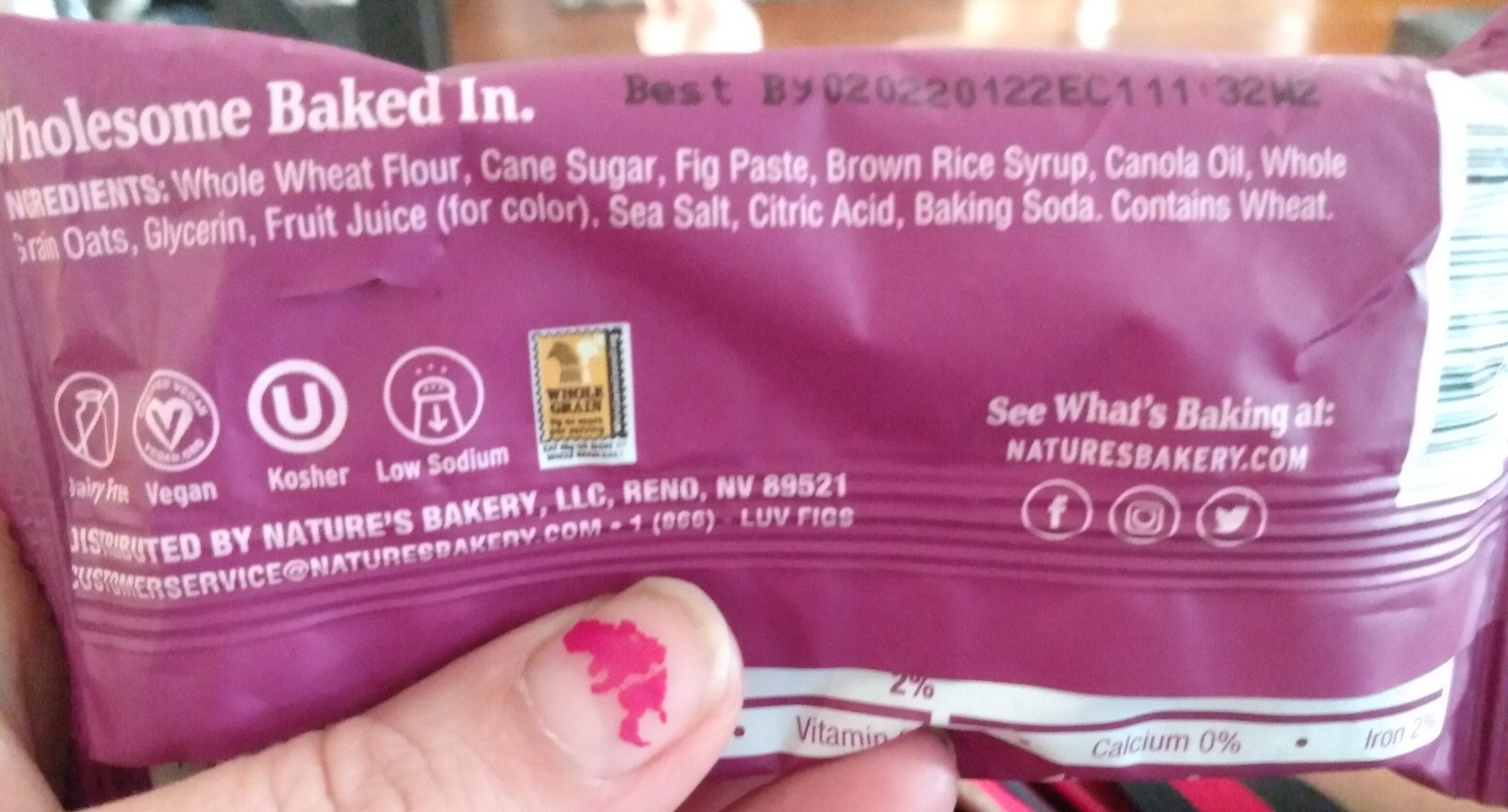Fig Bar - Nature's Bakery
This product page is not complete. You can help to complete it by editing it and adding more data from the photos we have, or by taking more photos using the app for Android or iPhone/iPad. Thank you!
×
Barcode: 4749511780
Brands: Nature's Bakery
Categories: Snacks, Sweet snacks, Bars
Labels, certifications, awards:
Organic, Vegetarian, EU Organic, Kosher, Vegan, AB Agriculture Biologique

Countries where sold: United States
Matching with your preferences
Environment
Packaging
Transportation
Labels
Report a problem
Data sources
Product added on by openfoodfacts-contributors
Last edit of product page on by tmbe7.
Product page also edited by charlesnepote, inf, roboto-app.
If the data is incomplete or incorrect, you can complete or correct it by editing this page.








